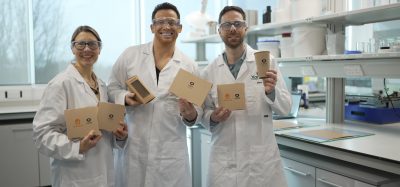Soil erosion worse than first thought in Corn Belt
- Like
- Digg
- Del
- Tumblr
- VKontakte
- Buffer
- Love This
- Odnoklassniki
- Meneame
- Blogger
- Amazon
- Yahoo Mail
- Gmail
- AOL
- Newsvine
- HackerNews
- Evernote
- MySpace
- Mail.ru
- Viadeo
- Line
- Comments
- Yummly
- SMS
- Viber
- Telegram
- Subscribe
- Skype
- Facebook Messenger
- Kakao
- LiveJournal
- Yammer
- Edgar
- Fintel
- Mix
- Instapaper
- Copy Link
Posted: 16 February 2021 | Joshua Minchin (New Food) | No comments yet
Soil erosion in the US’ Corn Belt is worse than feared according to new research by an American university.


More than one-third of the Corn Belt in the US’ Midwest – nearly 100 million acres – has completely lost its carbon-rich topsoil, according to University of Massachusetts Amherst research that indicates the US Department of Agriculture has significantly underestimated the true magnitude of farmland erosion.
In a paper published in the Proceedings of the National Academy of Sciences, researchers led by UMass Amherst graduate student Evan Thaler, along with professors Isaac Larsen and Qian Yu in the department of geosciences, developed a method using satellite imagery to map areas in agricultural fields in the Corn Belt of the Midwestern US that have no remaining A-horizon soil.
The A-horizon is the upper portion of the soil that is rich in organic matter, which is critical for plant growth owing to its water and nutrient retention properties. The researchers then used high-resolution elevation data to extrapolate the satellite measurements across the Corn Belt and gauge the true magnitude of erosion.
Productive agricultural soils are vital for producing food for a growing global population and for sustaining rural economies. However, degradation of soil quality by erosion reduces crop yields. Thaler and his colleagues estimate that erosion of the A-horizon has reduced corn and soybean yields by about six percent, leading to nearly $3 billion in annual economic losses for farmers across the Midwest.
The A-horizon has primarily been lost on hilltops and ridgelines, which according to the research team indicates that tillage erosion – the downslope movement of soil by repeated ploughing – is a major driver of soil loss in the Midwest.
Furthermore, the research suggests erosion has removed nearly 1.5 petagrams of carbon from hillslopes. The team has suggested that the restoration of organic carbon to the degraded soils by switching from intensive conventional agricultural practices to soil-regenerative practices has the potential to sequester carbon dioxide from the atmosphere while restoring soil productivity.
Related topics
Environment, Food Security, Research & development, Supply chain, Sustainability









